MP Board Class 9 History Chapter 1 – Events and Processes
MP Board Solutions for Class 9 History Chapter 1 – Events and Processes: The French Revolution are essential for understanding major political movements in the MPBSE curriculum. These well-structured answers help students grasp topics like the causes of the French Revolution, the fall of the monarchy, and the rise of democratic ideas in Europe. Designed as per the latest syllabus, these solutions strengthen conceptual clarity and improve exam preparation. Ideal for revision and practice, they build historical thinking and analytical understanding, making them a valuable study tool for scoring well in Class 9 Social Science exams.
MP Board Solutions For Class 9 History – Events and Processes – Exercise Images
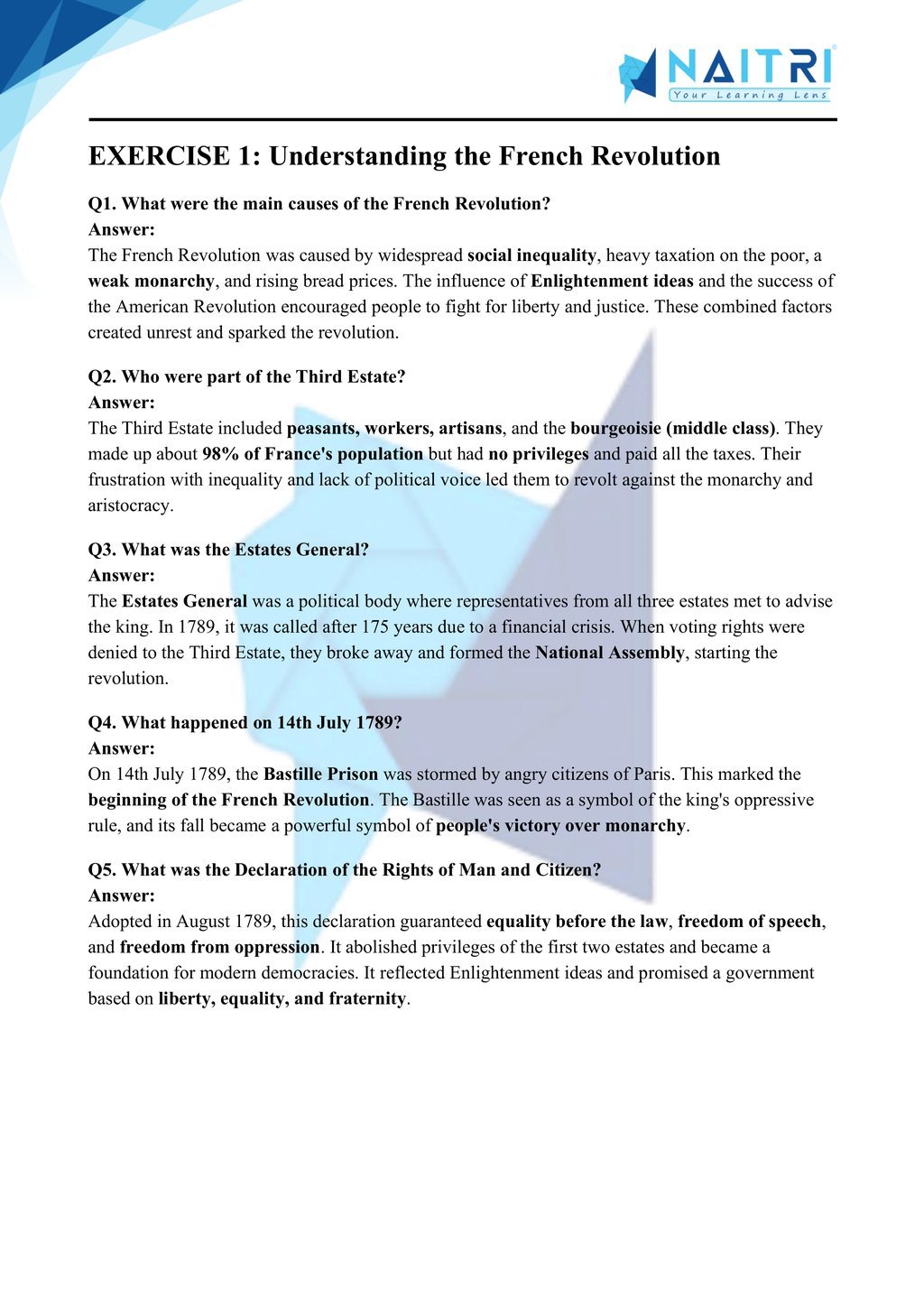
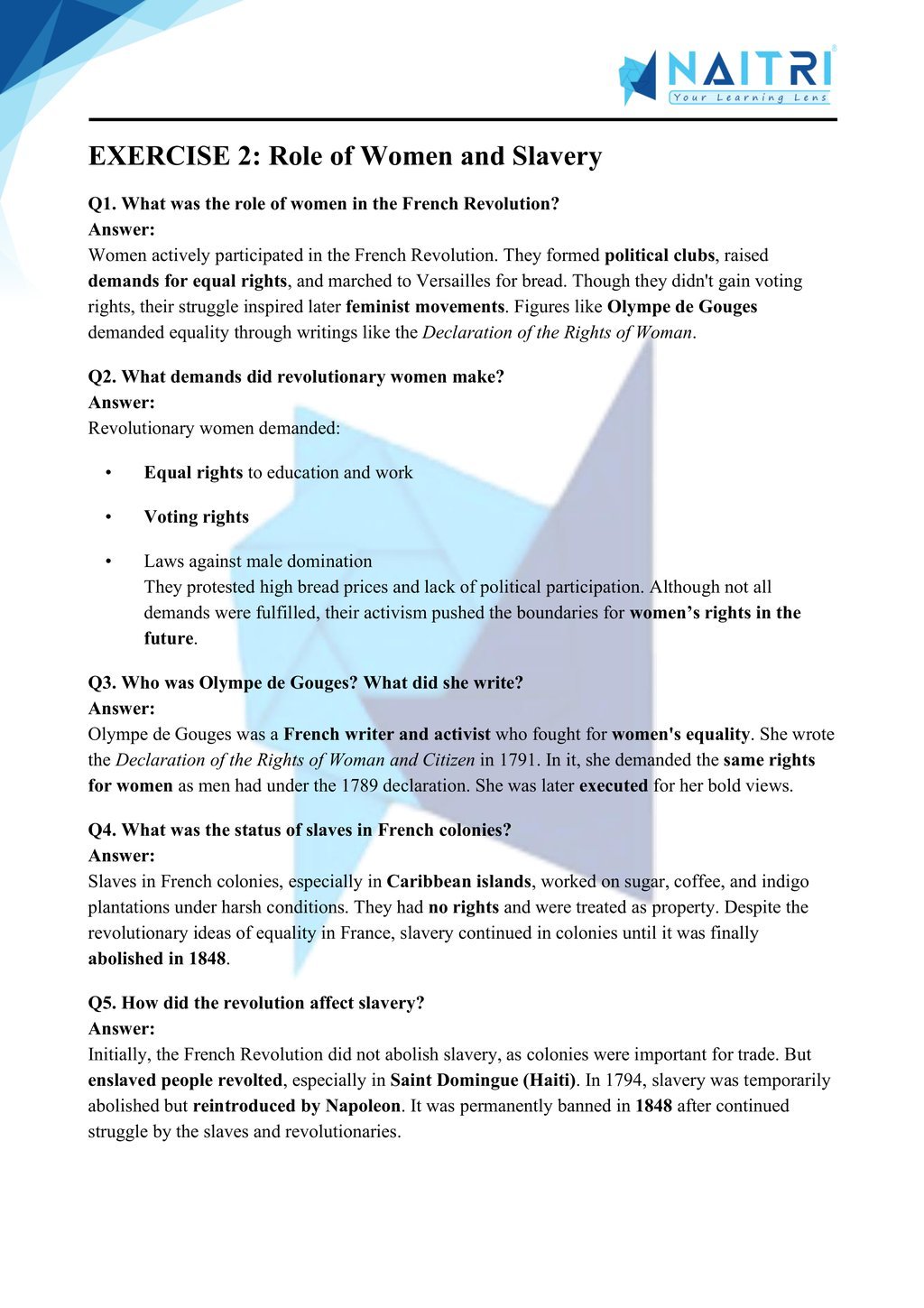
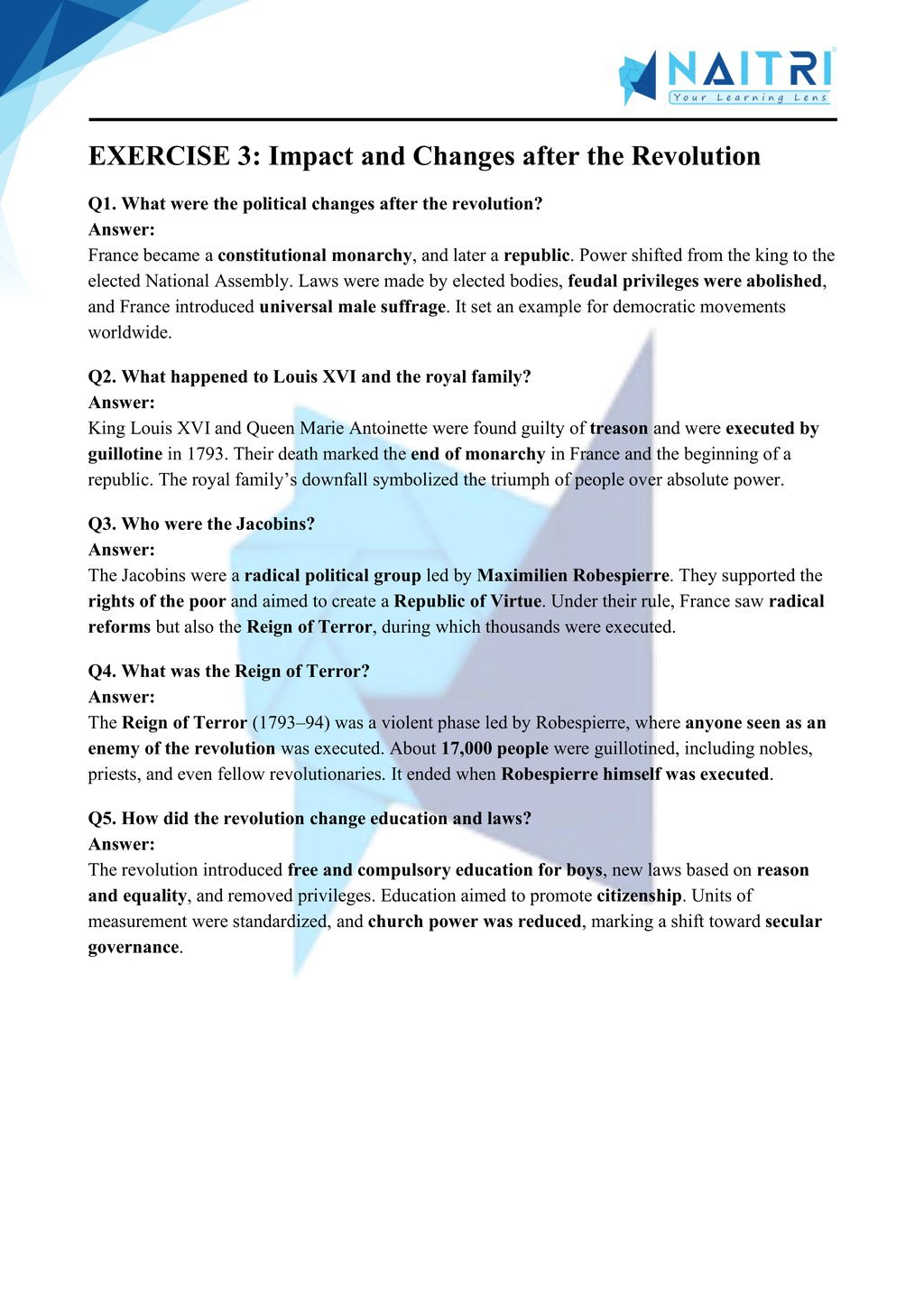
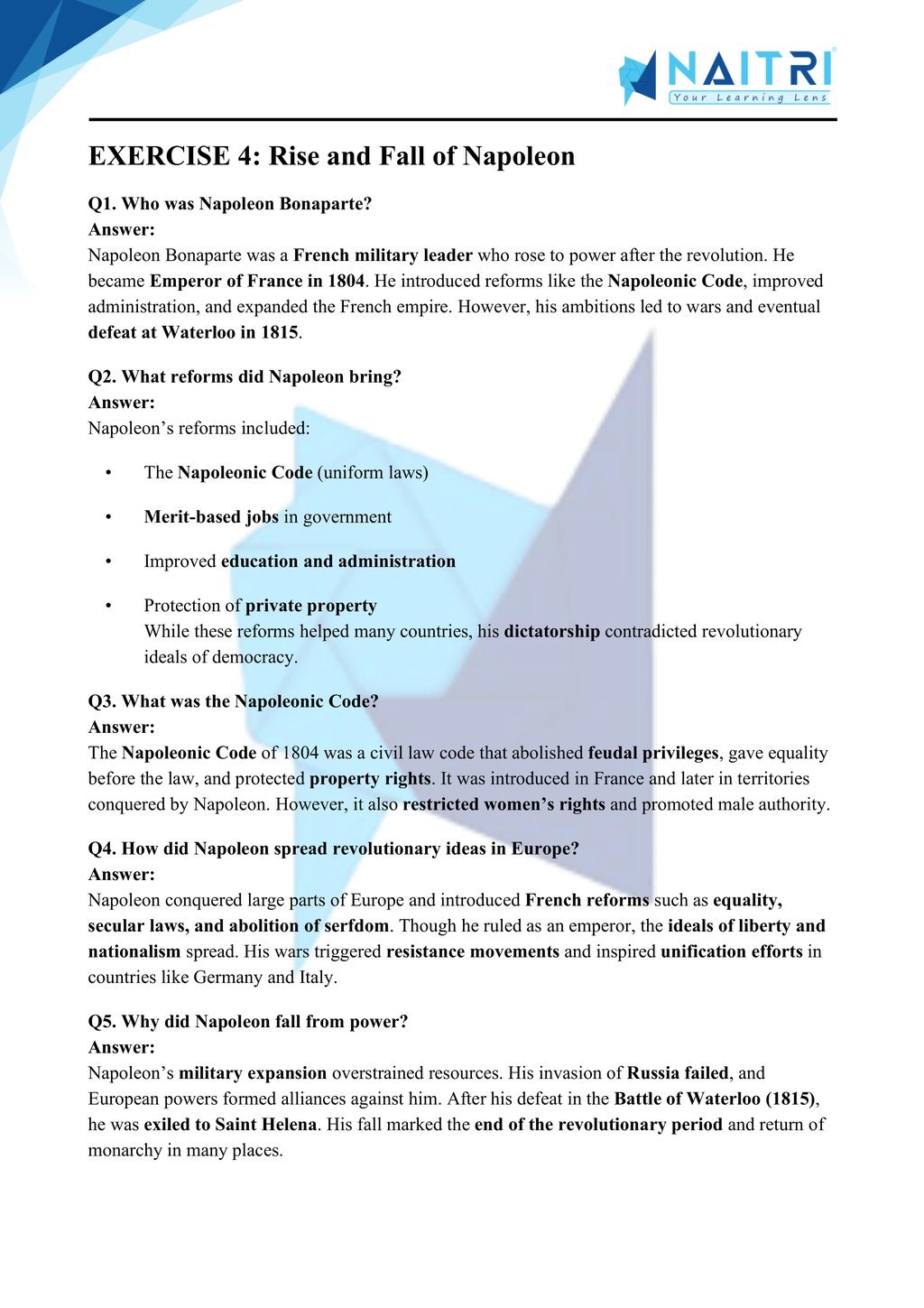
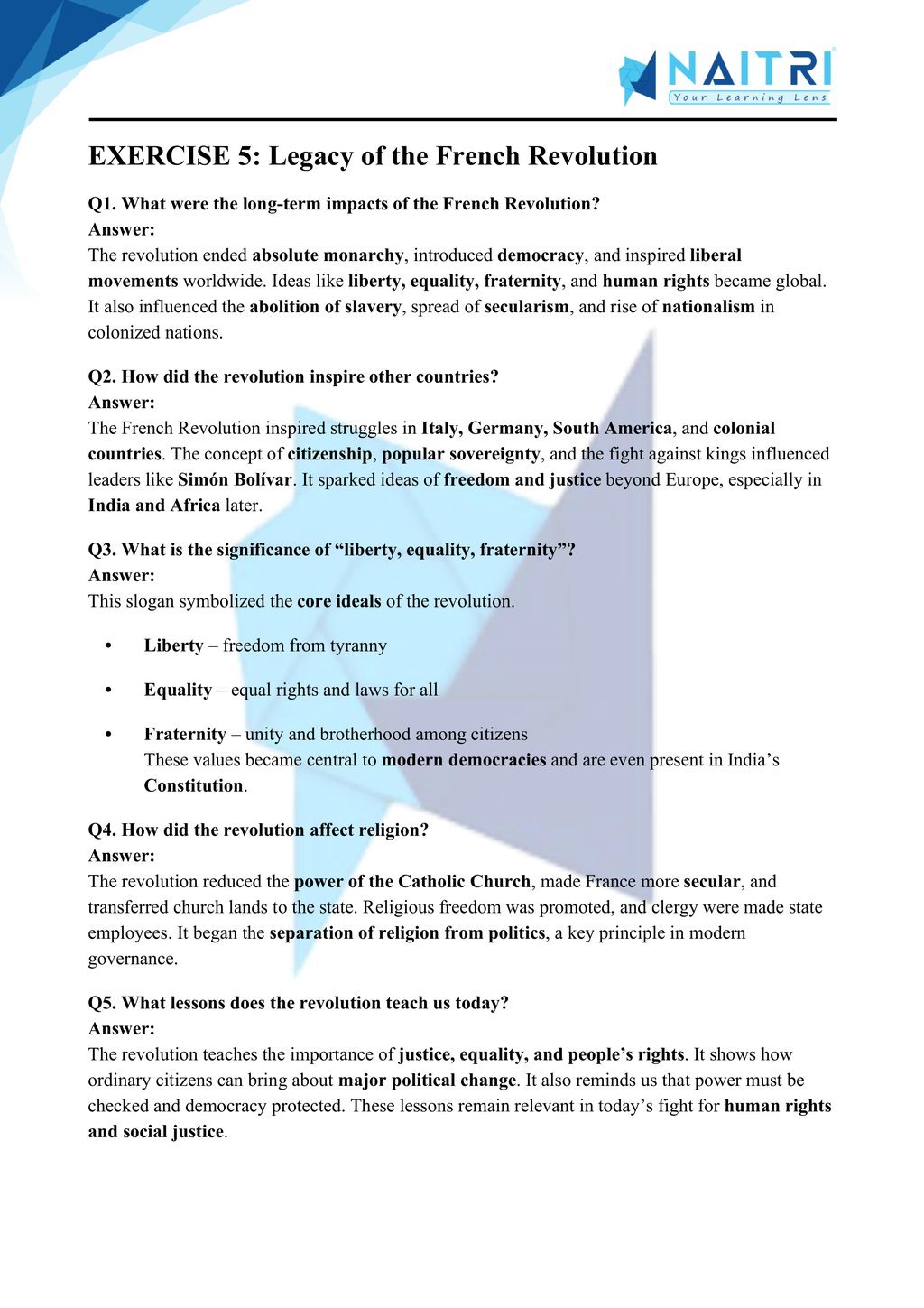
Experience History Like Never Before – With AR!
Understanding Events and Processes is now more exciting and immersive! With the NAITRI App, you can explore complex history concepts through Augmented Reality (AR). Experience revolutions ignite, political ideas spread, and historical changes unfold — right in front of you. Our AR-powered lessons make learning interactive, 3D, and fun, helping you retain concepts better and enjoy every topic.



Visualize . Interact . Understand . The future of learning is here
Events and Processes – Important Questions with Answers
What was the French Revolution?
Answer: The French Revolution was a major political and social movement in 1789 France that ended the monarchy, abolished feudal privileges, and introduced democracy and citizenship rights.What were the causes of the French Revolution?
Answer: It was caused by social inequality, economic hardship, absolute monarchy, enlightenment ideas, and a series of poor harvests that led to famine and unrest.Who were the members of the Third Estate?
Answer: The Third Estate included peasants, urban workers, and the middle class (bourgeoisie) who bore the tax burden but had no political power or privileges.What was the role of philosophers in the French Revolution?
Answer: Philosophers like Voltaire, Rousseau, and Montesquieu spread ideas of freedom, equality, and justice, inspiring people to challenge royal authority and demand reform.What was the Estates General?
Answer: The Estates General was a legislative body representing the three estates of France. It was called by the king to approve new taxes in 1789.What was the Tennis Court Oath?
Answer: The Tennis Court Oath was a vow by the Third Estate members to draft a new constitution, signifying the start of the French Revolution.Who were the Jacobins?
Answer: The Jacobins were a radical political group led by Robespierre. They demanded equality and were responsible for the Reign of Terror.What was the Bastille and why was it stormed?
Answer: The Bastille was a prison and symbol of royal oppression. It was stormed on July 14, 1789, by revolutionaries for arms and to show resistance.What was the Declaration of the Rights of Man?
Answer: It was a revolutionary document declaring liberty, equality, and fraternity as fundamental rights for all men, laying the base for a new republic.What was the Reign of Terror?
Answer: A period from 1793 to 1794 when Robespierre used the guillotine extensively to eliminate enemies of the revolution, creating a climate of fear.Who was Robespierre?
Answer: Robespierre led the Jacobins during the revolution. He introduced extreme reforms and was later executed, ending the Reign of Terror.What was the Directory?
Answer: A five-member committee that ruled France after Robespierre’s fall, known for being corrupt and inefficient, later overthrown by Napoleon.Who was Napoleon Bonaparte?
Answer: Napoleon was a French military leader who rose to power in 1799, declared himself Emperor, and introduced the Napoleonic Code across Europe.What was the impact of Napoleon’s rule?
Answer: While Napoleon spread legal reforms, he also suppressed freedom of expression and became a dictator, undoing some democratic gains of the revolution.How did the revolution affect women?
Answer: Women demanded education, equal pay, and political rights. Though active in protests, they were excluded from formal citizenship.What was the role of women in the French Revolution?
Answer: Women organized clubs, took part in protests, and demanded rights, playing a key role though their demands were later ignored by leaders.What was the guillotine?
Answer: A device used for executions, especially during the Reign of Terror, symbolizing the swift and public justice promoted by revolutionaries.What was the legacy of the French Revolution?
Answer: The revolution promoted democracy, ended feudalism, and inspired future revolutions worldwide, making liberty and equality central political goals.How did the revolution affect the Church in France?
Answer: The Church lost land and privileges. Religious institutions were taken under state control, and clergy had to pledge allegiance to the nation.Who were the Sans-culottes?
Answer: They were working-class revolutionaries who demanded radical reforms, such as food controls and universal male suffrage, and supported Jacobin leadership.What changes did the revolution bring to France’s political system?
Answer: The monarchy was abolished, and a republic with elected representatives was formed, introducing universal male suffrage.How did the revolution impact the world?
Answer: It inspired anti-colonial movements, republicanism, and civil rights demands globally, reshaping ideas about government and society.What was the National Convention?
Answer: It was a revolutionary assembly that governed France after the monarchy’s fall and ordered the execution of King Louis XVI.What is feudalism and how was it abolished?
Answer: Feudalism, a system of land-based privileges and obligations, was ended by revolutionary laws abolishing dues and privileges of the nobility.Why is the French Revolution considered a turning point in history?
Answer: It changed the structure of government and society, introduced modern democratic ideals, and empowered people with the idea of citizenship and rights.
The French Revolution introduces students to one of the most significant political revolutions in world history. It covers the social, economic, and political conditions in 18th-century France, the role of Enlightenment thinkers, and the rise of revolutionary ideas. The chapter explores key events like the storming of the Bastille, the Reign of Terror, and the rise of Napoleon. It emphasizes the birth of democratic ideals such as liberty, equality, and fraternity, which continue to shape political systems today.
Download Naitri App
Easy, Visual Learning — Right on Your Phone
Learn with Augmented Reality! The Naitri app makes CBSE and MP Board concepts interactive and fun — even in low-resource settings. Watch lessons, complete homework, take tests, and track progress — all in one place. Anytime. Anywhere.
Available on








